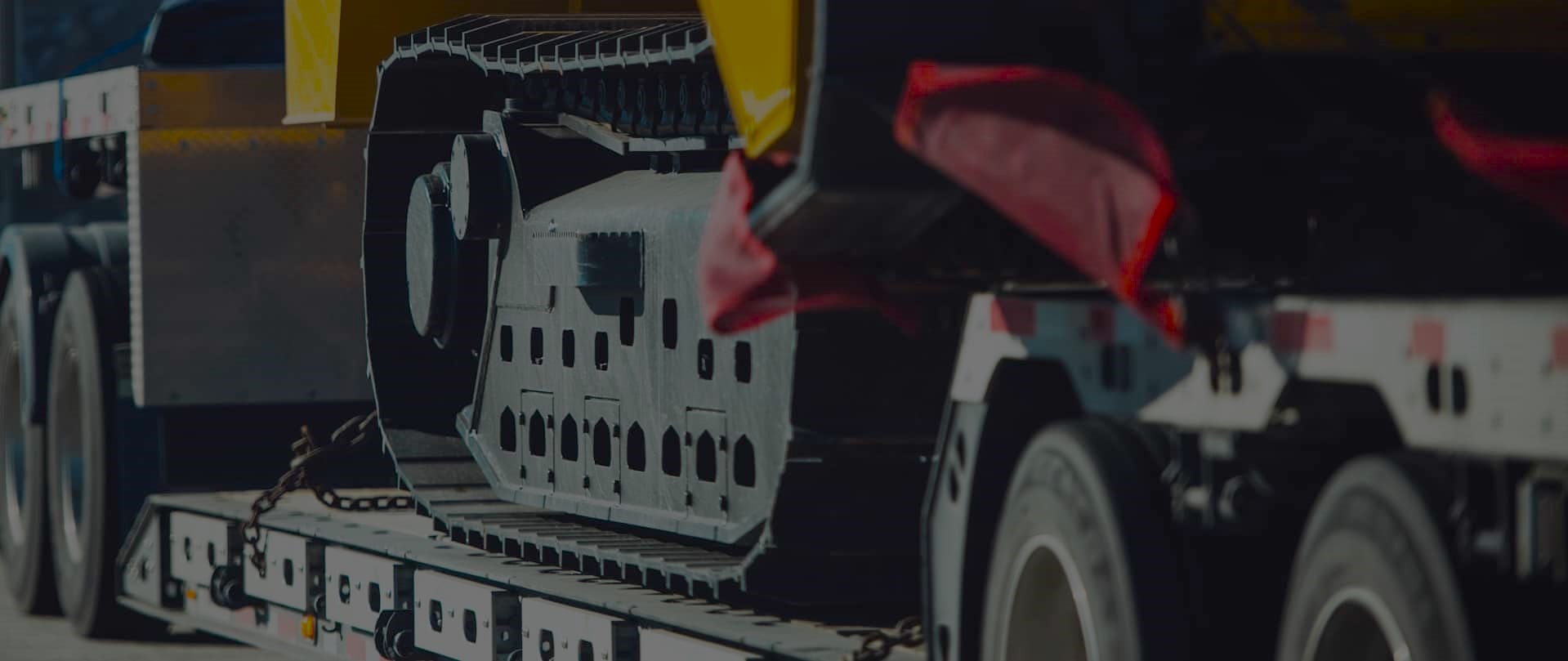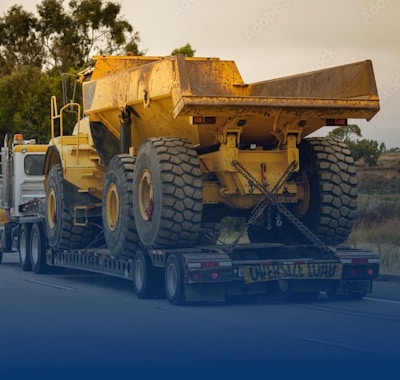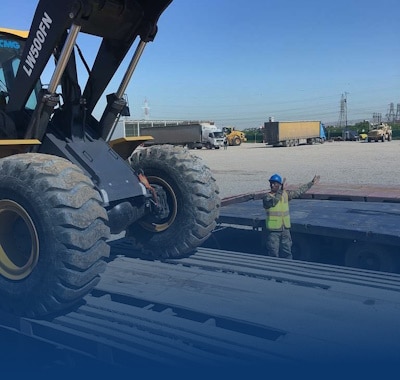Midwest Detours: Overcoming Spring Flooding Challenges
Freedom Heavy Haul can offer expedited Pickup and Delivery for any size shipment anywhere in the USA. Contact us today for No Hassle, No Pressure Pricing.
The very wet winter and a rapid thaw pushed the Mississippi River toward historic highs, sending urgent alerts across five states. In just days, meltwater surged as nearly 80% of the upper basin’s snowpack vanished in three days, and the National Weather Service issued 58 flood warnings.
Places saw top-three crests on record. In Camanche, Iowa, Jack and Willa Murphy sandbagged around their home as the river was set to crest near 23 feet. Volunteers and students formed sandbag lines to protect homes and key roads.
Local leaders mounted quick emergency response to keep people and goods moving. Detours, closures, and safety measures reshaped the time it took families to reach work, school, and services.
While waters can crest within days, recovery takes longer. Communities are planning cleanup, monitoring river levels, and rebuilding routines as they prepare for the weeks and months ahead.
Rising waters across the Mississippi River Basin set a difficult spring scene
An abrupt April thaw turned dense snow into a fast-moving swell that tested several river gauges. Heavy, wet snow across the river basin met warm air and sent surge flows into channels. In just days, nearly 80% of the upper basin’s snowpack melted and pushed water levels on the Mississippi River toward top-three crests in multiple spots.
Heavy, wet snowpack and rapid April thaw push water levels toward top-three crests
Rapid melt overwhelmed dry ground that had briefly soaked up some runoff. Soils saturated quickly and manageable flows turned into widespread flooding. Some locations reached top-three crests, and forecasts warned that impacts could linger into May.
Dozens of flood warnings across Wisconsin, Minnesota, Iowa, Illinois and Missouri
The National Weather Service issued 58 flood warnings across WI, MN, IA, IL and MO, signaling a large disaster footprint that affected mid-sized cities and rural areas. Travelers across midwestern corridors saw rising river levels and slower, safer travel as routes changed.
- Tributaries and ice-free channels added volume and speed, amplifying risk.
- Crest forecasts now help people plan trips and predict when routes might reopen.
- Officials urge regular checks on water and river levels because conditions can shift fast.
| Metric | Detail | Implication |
|---|---|---|
| Snowpack melt | ~80% in three days | Rapid surge into channels |
| Warnings issued | 58 flood warnings | Wide-area disaster footprint |
| Crest records | Top-three at multiple sites | Longer impacts into May |
Roads, bridges, and local detours: where travel is slowing or stopping
High water forced motorists to find new routes as bridges and low roads became unsafe. Flooding along the scenic Great River Road closed Wisconsin Highway 35 and parts of downtown Fountain City after a highway flood barrier broke loose. The city declared a state of emergency and rerouted people away from the affected areas.
Great River Road pinch points
The loose barrier sent water into a city park and a baseball diamond. A local food pantry moved supplies to higher ground with help from students. That quick community response kept essentials available for neighbors.
Bridge closure adds long trips
The Black Hawk Bridge near Lansing shut for dike inspections, removing a key Mississippi River crossing and forcing drivers to travel nearly 60 miles between available spans. Commuters and freight faced added travel times and route planning headaches.
On-the-ground conditions and safety checks
State and county crews inspect bridge approaches, dikes, and low-lying locations before reopening. Levels can shift quickly; road conditions often lag behind the visible peak. Check official updates before you leave to save time and reduce risk.
“Crews are evaluating structural safety so we reopen only when roads meet strict standards.”
| Issue | Location | Impact |
|---|---|---|
| Barrier failure | Fountain City | Downtown closures; city emergency |
| Bridge inspection | Black Hawk Bridge (Lansing) | 60 miles between crossings; longer commutes |
| Local flooding | Park & food pantry | Evacuation of supplies; student volunteers assisted |
River traffic at a standstill: locks, dams and barge delays during flood stage
High river stages cut off a key supply route, grounding barges and pausing river commerce along the Mississippi River.
Army Corps closes 18 locks and dams from the Twin Cities to Illinois
The U.S. Army Corps of Engineers shut 18 locks and dams because high water and fierce currents made navigation unsafe. Some structures, like Lock and Dam 4 in Alma, Wisconsin, were overtopped. Others closed when strong currents pushed barge strings toward dam faces.
No barge detours available: commerce waits for water to recede
Unlike highways, the river offers no alternate route for tows. Operators must wait for the flood stage to fall and for u.s. army engineers to clear openings.
- The closures created a compounded navigation disaster: overtopped gates and damaged equipment sidelined crews.
- Supply chains felt the impact — grain, fuel and building materials faced delays as spring demand climbed.
- Lock reopenings hinge on state and federal safety checks; crews watch official bulletins before staging loads.
“We suspended lock operations until we can confirm safe currents and structure integrity.”
Midwest detour challenges during spring flooding season
When bridges shut, people found that a short trip could suddenly add an hour or more to the drive.
Longer commutes for people living and working across the river
A single closure, like the Black Hawk Bridge near Lansing or the break at Wisconsin Highway 35 in Fountain City, added dozens of miles for many commuters.
Residents who live on one bank and work on the other faced longer times on the road and higher fuel costs. Local officials stressed inspections and safety checks before any reopening.
Alternate routes stretch miles and extend travel times
Flood waters change the quickest way to get around. Drivers were routed onto rural connectors and two-lane roads with limited shoulders and few passing zones.
Temporary signals and lower speed limits helped crews and people stay safe, but they also slowed trips for families and small businesses that rely on timely deliveries.
“Map multiple options each morning; an overnight rise or an early reopening can flip the fastest way to go.”
- Practical steps: carpool, shift work hours, or use remote options when possible.
- Cities, towns, and counties coordinate road clearances and debris removal to keep key corridors open.
- Higher travel costs and added miles strain household budgets and local commerce until routes fully reopen.
| Issue | Effect | Local response |
|---|---|---|
| Bridge closure (Black Hawk) | Dozens of miles added to commutes | Extended inspections; alternate crossings posted |
| Highway barrier failure (Fountain City) | Downtown access limited; longer routes | Volunteer relocation of supplies; road repairs planned |
| Rural route congestion | Slower speeds; limited shoulders | Temporary signals; traffic control by counties |
| Fuel and time costs | Higher household and business expenses | Local advisories; carpool encouragement |
Emergency response and community resilience on display
Neighbors, students and crews formed a fast, organized line to protect streets and homes. In low-lying city blocks, sandbag teams and pumps held back rising water while officials tracked crest forecasts.
Sandbag lines, student volunteers, and pumps keep homes on French Island drier
On French Island, large pumps supplied by the army corps kept neighborhoods drier than in 2001, when 70 homes were inundated. Sandbag lines of students and volunteers worked side by side with local crews to shield porches and basements from floodwaters.
People organized check-ins and supply runs for seniors and residents with limited mobility. That simple neighbor-to-neighbor care kept many living rooms dry and aided first responders.
U.S. Army Corps engineering support in McGregor and Marquette as rivers crest
The u.s. army sent engineers to McGregor and Marquette to boost on-the-ground response. Teams positioned pumps and offered technical help so officials could monitor crests and move gear where it mattered most.
“Community effort plus targeted engineering made a clear difference,”
- Coordinated program of sandbagging and shared equipment preserved access for emergency crews.
- Response partners tracked forecasts and staged resources across the area.
- Residents were urged to document damage and keep receipts for aid applications.
| Action | Location | Result |
|---|---|---|
| Large pumps | French Island | Fewer flooded homes than 2001 |
| Engineering teams | McGregor & Marquette | Faster, safer resource placement |
| Volunteer program | Multiple cities | Protected streets; aided neighbors |
Resilience is more than gear; it is the people who lift together until the worst passes and cleanup begins.
Daily life and local economies under pressure
River road closures rerouted weekend travelers and emptied tables at longtime eateries. In Fountain City, officials warned the main hit would be financial for restaurants and taverns along the river road.
Fewer visitors and longer miles of travel mean fewer diners and shoppers. Small businesses that anchor a community feel the loss fast when a popular stretch is closed for a week or two.
How people and businesses adapt
Owners shift hours, add curbside pickup, or team up with neighboring cities towns to guide customers to open corridors. State and local governments may offer emergency grants or low-interest loans, but many face payroll choices and supply delays.
The mental toll is real. Staff and owners balance cleanup, forecasts, and customer service through what should be the busiest weekends of the year.
“Buy local” campaigns and neighborly promotion can help bridge shortfalls until traffic returns.
- Reduced foot traffic quickly lowers weekly revenue for riverfront shops.
- Communities reliant on scenic drives can see sharp dips after a disaster closes access.
- Practical responses include shared promotions, curbside service, and flexible hours.
| Impact | Local response | Result |
|---|---|---|
| Fewer visitors | Buy-local campaigns | Short-term cash flow support |
| Longer travel miles | Partnerships with nearby towns | Rerouted customers to open businesses |
| Payroll pressure | Emergency grants/loans | Partial relief; some owners still decide payrolls |
Beyond the crisis: infrastructure and mitigation shaping future floods
A major investment in levees, channels and control gates aims to cut risk for decades across the river basin. The $3.2 billion Fargo-Moorhead Area Diversion combines a 30-mile channel with a 22-mile southern embankment and three control structures to give at least 100-year protection and room to handle much larger events.
Inside the diversion and how it works
The three massive structures — Diversion Inlet, Wild Rice, and Red River — meter flow and protect the metro area. Aqueducts use heated flumes to limit ice dams and keep water moving, while a rock-rapids fish passage at Drayton supports migration.
Construction, jobs, and local programs
Construction has driven equipment purchases, apprenticeships, and nearly 4,200 jobs. Utility relocations, winter excavation windows for tricky Sherack and Brenna soils, and careful staging kept work on schedule toward operations targeted for 2027.
Financing and mitigation beyond flood control
Voter-approved local taxes, state contributions, IIJA funds, WIFIA loans and private bonds formed a green finance package. Nearly 2,000 acres of habitat and wetland mitigation restore systems that reduce future flood risk and help the community recover faster after a disaster.
“Partnerships between local governments, private teams and the army corps cut delivery time and brought years of protection forward.”
| Element | Feature | Benefit | Target year |
|---|---|---|---|
| Channel & embankment | 30-mile channel; 22-mile embankment | 100-year protection; larger event capacity | 2027 |
| Control structures | Diversion Inlet, Wild Rice, Red River | Metered flow through metro area | Operational planning |
| Ecological mitigation | ~2,000 acres | Habitat, wetlands restored; added mitigation | Concurrent with construction |
| Financing & jobs | IIJA, WIFIA, local taxes, bonds | 4,185 jobs; local equipment and apprenticeships | Multi-year program |
Traveler guidance: safe routes, timing, and reliable information sources
Even as crests ease, unseen hazards can keep routes closed. Expect inspections, debris removal, and repairs even after water starts to fall. River crests were forecast to recede in early May in many spots, but cleanup can stretch into mid‑month.
Before you go: check state DOT maps and local sheriff updates for real‑time locations of closures, lane restrictions, and alternative routes across midwest corridors along the Mississippi River.
Budget extra time at the end of a crest cycle. Shoulder fixes and debris removal add minutes or hours to a trip, so allow room in your schedule for delays.
“Never drive through standing water — pavement may be washed out beneath the surface.”
- Heed emergency barricades and posted warnings; they protect lives and crews.
- Monitor official river gauges and water levels to find safe windows for travel, especially near known flood‑prone bridges.
- Remember that governments coordinate response priorities—emergency access, school routes, and freight corridors reopen first; smaller roads may wait.
- For rural travel, fuel up early, carry a paper map, and watch for farm equipment and work crews on narrow two‑lane roads in the area.
| What to check | Tip | Why it matters |
|---|---|---|
| State DOT maps | Real‑time closures | Shows official lane and bridge status |
| Local sheriff alerts | Localized updates | Pinpoints emergency closures |
| River gauges | Track water levels | Helps pick the safest time to travel |
Looking ahead as waters recede and communities prepare for the next season
As the river levels drop, local teams check culverts, bridges, and foundations for hidden harm. Cleanup begins on soggy ground: clearing debris, photographing damage, and noting what needs repair.
Governments and community partners should document losses and enroll in mitigation programs that harden infrastructure. Targeted construction and staged equipment keep response capacity ready in future years.
Regional work — from small towns to state and federal agencies — aligns funding, permits, and standards across the river basin. Projects like the Fargo‑Moorhead Diversion show how shared structures and coordinated response reduce disaster impact over many years.
Neighbors helping neighbors kept people safe this spring. Those lessons, plans, and drills will make communities stronger when floodwaters return.







